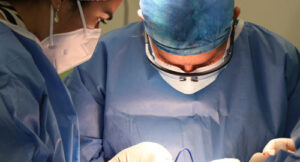Abortion Doctors Describe Abortions and Why They Performed Them
Many abortion doctors began performing abortions because they felt they were helping women but later stopped and began speaking out against having abortions. Here are direct quotes from some of these doctors.
I am personally responsible for 75,000 abortions. This legitimizes my credentials to speak to you with some authority on the issue.
Frequently, I am asked what made me change my mind. How did I change from a prominent abortionist to a pro-life advocate? I became director of obstetrics at a large hospital in New York City and had to set up a prenatal research unit, just at the start of a great new technology that we now use every day to study the fetus in the womb.
A favorite pro-abortion tactic is to insist that the definition of when life begins is impossible, that the question is a theological or moral or philosophical one, anything but a scientific one. Fetology makes it undeniably evident that life begins at conception and requires all the protection and safeguards that any of us enjoy.
Why, you may well ask, do some American doctors who are privy to the findings of fetology, discredit themselves by carrying out abortions? Simple arithmetic at $500 a time, 1.2 million abortions means an industry generating $600 million annually, of which most goes into the pocket of the physician doing the abortion.
Permissive abortion is the purposeful destruction of what is undeniably human life. It is an impermissible act of deadly violence. One must concede that unplanned pregnancy is a wrenchingly dilemma, but to look for its solution in a deliberate act of destruction is to trash the vast resourcefulness of human ingenuity and to surrender the public weal to the classic utilitarian answer to social problems.
As a scientist I know, not believe, know that human life begins at conception. Although I am not a formal religionist, I believe with all my heart that there is a divinity of existence that commands us to declare a final and irreversible halt to this infinitely sad and shameful crime against humanity.
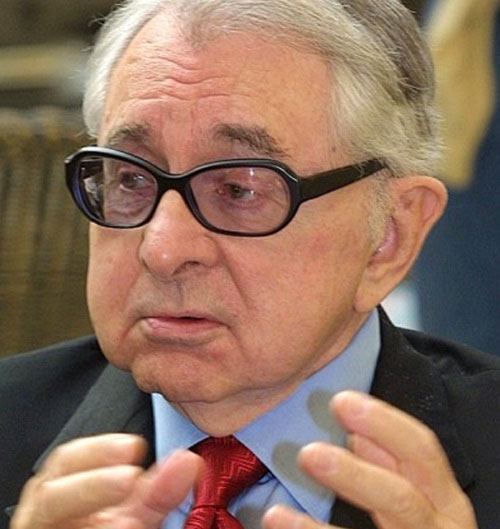
I was not a reluctant participant in abortion. I was a radical feminist. During my residency at Cook County Hospital in Chicago, I made my decision to be an abortionist. At the hospital, I noticed that quite a number of women who were bleeding and running a fever were being admitted. I started IVs and gave blood and antibiotics to the patients. About halfway through the night, it dawned on me that these women were coming from Chicago’s illegal abortion mills.
At the end of six weeks, I was angry at what I had seen. I thought that women should have a safe abortion and I would provide it. At that time, there was not one abortion center in the entire state of Mississippi.
A group of “concerned citizens and clergy” had already lined up a place to rent and had hired nurses and counselors. Everything was ready to open the first abortion mill in Mississippi, except that they needed a physician willing to become the “town abortionist.” I initially declined, but later determined that I would run the best abortion facility in the country.
The new abortion mill was running smoothly. We only offered first trimester (first 12 weeks of pregnancy) abortions because I felt later abortions were riskier. Nevertheless, I did experience complications, the worst of which was perforating a uterus and suctioning a piece of small bowel into the tube.
I was so depressed I couldn’t stand it. I started considering Christianity, and at one point prayed the scripture, “I can do all things through Christ who strengthens me.” One day an employee at the mill asked to see the contents of the sock in the suction machine. I saw a beautiful arm, and I thought, “What are you doing?” That was one of the last abortions I did.
Dr. McMillan resigned from the abortion clinic and became an advocate against abortion.
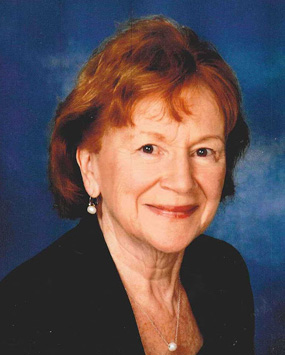
Abortion Doctor: Dr. Anthony Levatino – Albany, New York
Dr. Anthony Levatino did abortions for eight years as part of his Albany, NY, practice, performing dilation and evacuation in late-term abortions. As Dr. Levatino stated, In a D&E abortion, you are pulling out pieces of unborn children.
From the onset, Dr. Levatino was vaguely troubled by the work but continued to do it for the money. It’s highly profitable. I could do three abortions in my office in an hour and a half and make more than caring for a woman for nine months and delivering her baby.
Redemption
It took a personal tragedy to prompt a change of heart. While he was doing abortions as a resident, he and his wife were trying desperately to have a child. There I was throwing kids in the garbage, five or six a week. Just give me one, I thought.
Eventually, they adopted a little girl and named her Heather. Several years later, Heather was killed by an auto in front of their home. She died in her father’s arms.
If you lose a child, you look at things differently. What was once uncomfortable becomes intolerable. You feel that you’re destroying a human being for money, like a paid assassin. This is somebody’s child.
I lost my child, someone who was very precious to us. And now I am taking somebody’s child and I am tearing him right out of their womb. I am killing somebody’s child. That is what it took to get me to change. All the money in the world wouldn’t have made a difference. So I quit. I slept a lot better at night after that.
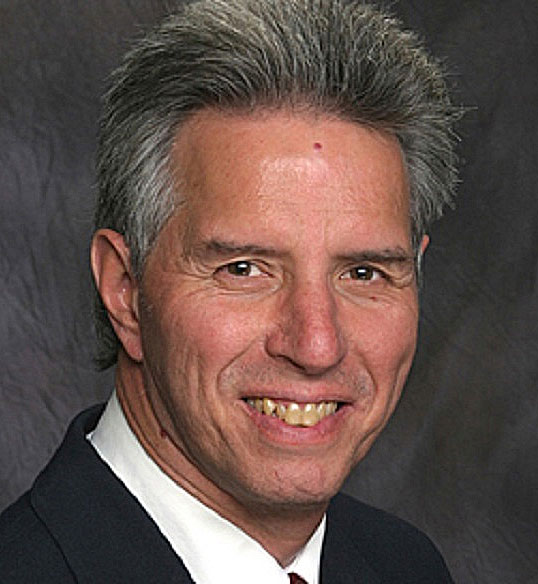
Abortion Doctor: Dr. Joseph Randall – Atlanta, Georgia
Dr. Joseph Randall operated an abortion clinic in Atlanta, GA, and estimates he performed 32,000 abortions. He used the dilation and evacuation (D&E) procedure.
After the operation you have to reassemble that baby – arms, legs, head, chest – everything. That’s when it got rough, even for old-timers like me.
When you looked at an ultrasound, there was no mistaking that this was a baby. Ladies who came in for mid-trimester (four to six months of pregnancy) abortions were shielded from the images. Several nurses quit. They would bond with the baby they saw on the screen; they couldn’t take it.
Dr. Randall finally stopped performing abortions when a Christian woman came to work in his office and convinced him of their immorality. He switched from doing abortions to volunteer counseling at a facility offering alternatives to abortion.
Abortion Doctor: Dr. Yvonne Moore – Memphis, Tennessee
Once I graduated from medical school, I returned to Memphis for residency in ob-gyn at the University of Tennessee. It had become a tradition within our residency program that the most lucrative and sought-after moonlighting jobs were found in the three local abortion clinics. You could make good money without having to leave town to work nights in hospital emergency rooms.
I knew some good residents chose not to do abortions for religious reasons, but I never really understood what one thing had to do with the other. My best friend in college had an abortion, and I had been very supportive of her decision at the time. We were thankful that the Supreme Court had made abortion legal the year after we started college.
It seemed only logical that when I was offered the chance to provide those services I had an obligation to do it. After all, if doctors who believed in a woman’s right to choose didn’t do abortions, who else would? By the time I was a senior resident, I was the medical director of one of the clinics and spent my vacation time at pro-abortion seminars and political functions.
It was not until I was pregnant myself that I began to examine my feelings about the moral aspects of abortion. It had taken over a year for me to become pregnant with my daughter. The first time I saw the tiny little flicker of her heartbeat on an ultrasound screen I fell completely in love with her.
I finally had to come to terms with the fact that the only thing that made my daughter any different than all those tiny babies I had terminated was the fact that I wanted her. It was as if the scales fell from my eyes and I was at last able to see what I had not allowed myself to see in all those years of doing terminations.
Abortion Doctor: Dr. Haywood Robinson – Bryan/College Station, Texas
During his residency, Dr. Haywood Robinson received abortion training. It was during this time that he met his wife, Noreen, and they began “moonlighting” together in abortion clinics. Money motivated them mutually, given substantial pay and the evident profitability of abortion training.
Shortly after marriage and completing their residency programs, Dr. Robinson and his wife became Christians and realized that their involvement in performing abortions was wrong. They stopped performing abortions, and are now a voice for the Pro-life movement.
Dr. Robinson stated, “[God] opened our eyes to how heinous this war against babies is and He launched us on a pro-life career. You become desensitized to the point where the physician dehumanizes that baby inside the uterus and it’s no longer holy — it’s no longer a precious human life.”
Dr. Robinson is now the Director of Medical Affairs & Education for the pro-life organization Forty Days for Life and speaks to other pro-life organizations at events and conferences.
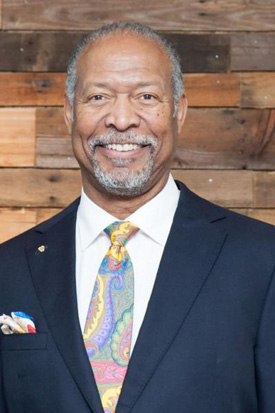
Abortion Doctor: Dr. Kathi Aultman – Orange Park, Florida
On November 6 Dr. Kathi Aultman was interviewed on the Van Maren Show and made the declaration, “I killed a lot more people than Ted Bundy.”
Dr. Aultman, like her counterparts, has deeply regretted the nearly 1,000 abortions she performed. Since turning away from the abortion industry after having her own baby, she has become an aggressive spokesperson for the pro-life cause and is now an Associate Scholar with the Charlotte Lozier Institute and a member of the American Association of Pro-life Obstetricians and Gynecologists, and the Christian Medical and Dental Associations.
She recently testified before Congress and spoke at the 2019 March for Life. These reformed abortionists have become more and more publicly visible with their powerful testimonies.

Abortion Doctors Opinions on Late Term Abortions
It has often been said that late term abortions are very rare. But what does this mean? According to the Alan Guttmacher Institute, the research arm of the abortion industry, late-term abortions account for only 1.3 percent of all abortions in the U.S. But exactly what does this mean?
Because there are approximately 926,000 abortions annually, this 1.3 percent means over 12,000 late-term abortions annually. Do these 12,000 abortions make it rare?
Necessity?
Late-term abortion advocates argue it’s crucial for saving mothers at risk due to pregnancy complications or carrying babies with birth defects like Down Syndrome.
However, turning once again to the experts within the abortion industry, the Guttmacher Institute states:
Most women seeking later terminations are not doing so for reasons of fetal anomaly or life endangerment… most women seeking later abortion fit at least one of five profiles: They raised children alone, faced depression or substance use, conflicted with a male partner, experienced domestic violence, had decision and access challenges, or were young and childless.
Doctoral insight
Likewise, OBGYNs and maternal healthcare experts have been very vocal in testifying that abortion is never medically necessary. In fact, over 1,000 of these doctors have signed a declaration stating:
As seasoned practitioners and researchers in obstetrics and gynecology, we assert that abortion, the deliberate destruction of the unborn child, is medically unnecessary to save a woman’s life. We maintain a fundamental distinction between abortion and essential medical treatments that aim to save a mother’s life, acknowledging their unavoidable impact on the unborn child. Prohibiting abortion doesn’t hinder optimal care for pregnant women.
Dr. Anthony Levatino is one of these OBGYNs who has practiced in one of the top high-risk obstetrics hospitals in the country. He has helped pregnant mothers in the most dangerous situations and has never recommended abortion.
Separation from the mother
According to Dr. Levatino it is necessary in these situations to separate the baby from the mother, not to kill the baby. Both are treated as patients and all efforts are made to save the baby after he is delivered by labor induction or C-section. Although a premature baby may not survive, the intent is never to purposely kill him.
Pregnancy problems like preeclampsia, toxemia, diabetes, etc., are never cause for an abortion. It is simply a matter of separating the baby from the mother, not intentionally killing the baby.
How are they performed?
It’s important to note that there are multiple different ways to perform first and second-trimester abortions, but the most used method for the third-trimester (late-term) abortions is often called induction abortion. To help ensure that the baby will be delivered dead rather than alive, the abortion doctor injects digoxin or potassium chloride through the mother’s abdomen, targeting the heart, head, or torso of the baby, causing cardiac arrest.
The abortionist also inserts laminaria to open the cervix to cause it to dilate. He may also administer labor-inducing drugs. Within two to four days she will go into labor and deliver a dead baby, usually, but not always.
Are there babies born alive?
When abortion clinic workers have been asked what is done if the baby is still alive, there has been a mixture of answers – one doctor said she would break the neck of the baby, another told of placing live-born babies into a jar of the solution to drown them.
In other cases, an undetected twin remains alive while his or her sibling dies in the abortion; and the twin is later born alive.
In rare instances, these aborted alive babies have been saved by nurses or their own mothers who changed their minds in the end. Some of these babies are now young adults and have been speaking out for other survivors and testifying before legislatures and the U.S. Congress for legislation to protect babies like them who are born alive during an abortion.
These vocal survivors include Melissa Ohden who survived a saline abortion at 31 weeks of pregnancy; Claire Culwell, who was a surviving twin; Josiah Presley, who lost an arm in the abortion, but his mother remained pregnant; and Gianna Jessen, another saline abortion survivor, to name a few.
Public opinion
With all the publicity over the changes in abortion laws allowing abortion through the moment of birth and even support for infanticide if a baby is aborted alive, public opinion polls are coming out dramatically opposed to these things.
This widespread revulsion of late-term abortions and killing babies aborted alive has shown up in recent public opinion polls. Opposition is even higher among people who self-identify as pro-choice, with 66% opposing late-term abortions and 77% opposing infanticide of babies aborted alive.
Lawmaker’s opinions
A handful of state legislatures have codified abortions through birth with no support for babies aborted alive. Many other states, however, are passing laws to prevent this.
Meanwhile, the U.S. Congress is completely split on this topic with most Republicans supporting laws to prevent late-term abortions and infanticide and most Democrats supporting all abortions throughout pregnancy and allowing the mother and abortion doctor to decide whether the aborted baby lives or dies.
In the last several months there have been multiple attempts to protect these babies aborted alive, but because of the procedures in the House of Representatives, the majority party of Democrats refuse to allow this issue to even come to a vote. Likewise, in the Senate, although there is a 53 member majority to protect babies who survive abortion, Senate rules require 60 votes to do so, and all but three Democrats vote against it.
These elected representatives are clearly in conflict with the voting public and the majority opinion of voters on both sides of the abortion issue.
Abortion Doctors Testify in Congress Against Abortion
After 1,200 Abortions Dr. Anthony Levatino Gives Strong Testimony
Dr. Anthony Levatino was a very active abortion doctor who admittedly performed as many as 1,200 abortions, some of which were after 20 weeks of pregnancy. A personal tragedy eventually caused a change of heart, and he now speaks out against abortion, particularly in the later months of pregnancy.
Dr. Levatino gave powerful testimony before a congressional committee holding hearings on a bill that would ban abortions after 20 weeks of pregnancy. The bill passed the House of Representatives by a vote of 242 to 184, but it was killed in the Senate when Democrats filibustered, and the required 60 votes to stop the filibuster could not be attained. President Obama had also planned to veto the bill if it passed.
This legislation dealt with the pain felt by an unborn child in an abortion after 20 weeks of pregnancy, and Dr. Levatino described the procedure and the pain felt in great detail, having a strong effect on the House members who would vote on this bill.
The bill was called the Pain Capable Unborn Child Protection Act, because an unborn child feels everything at this stage of pregnancy. Dr. Levatino went step by step through the procedure used in dismembering a child at 24 weeks of pregnancy. His description was nothing less than ghastly as he explained the process of grasping one leg at a time, approximately six inches long at this stage, and tearing them off. Then the arms are torn from the body, followed by the spine, intestines, heart and lungs.
He explained that the hardest part is removing the head, which is about the size of a large plum. House members were horrified to hear that the head was crushed and white fluid would come out of the cervix. That was the brains. Pieces of the skull could then be removed and the abortion was complete. The baby at this stage of development felt the pain of being dismembered limb from limb.
No one can describe the reality of abortion like the abortionist himself.
Dr. Kathi Aultman, former Abortionist, Tells Congress,
Dr. Harlan Giles’ Testimony
Dr. Aultman urged Congress to pass the Heartbeat Protection Act, banning abortion once a baby’s heartbeat is detectable at 6 weeks. After telling lawmakers that she felt like she was a mass murderer she went on to give her testimony:
When I entered medical school, I believed that the availability of abortion on demand was solely an issue of women’s rights, and during my residency, I moonlighted doing abortions, I was always fascinated by the tiny but perfectly formed limbs, intestines, kidneys, and other organs and I enjoyed looking at their amazing cellular detail under the microscope.
I acknowledge that it may be challenging to conceive of someone possessing the ability to carry out such actions with emotional detachment. However, owing to my training and conditioning, a human fetus appeared indistinguishable from the chick embryos I dissected during my college studies. I could examine them with a purely scientific curiosity, devoid of the usual emotions one might experience when looking at a baby.
I love to meet adults that I delivered, but it’s always bittersweet because I am reminded of all the people I will never meet because I aborted them. It also reminds me that I am a mass murderer. Just because we can’t see who they will become, we feel justified in sacrificing babies in the womb for the people we can see.
Our society has been subjected to extreme propaganda. We have sanitized our language to make abortion more palatable. I don’t believe a woman can remain unscathed after killing her child.
Dr. Harlan Giles Testifies on Partial Birth Abortion Bill
In response to claims that the partial-birth abortion procedure was medically necessary to save the life of a mother, many doctors testified against this procedure stating that it not only was unnecessary but was also dangerous to the mother. Testifying in support of a ban on partial-birth abortions performed in the second and third trimester, Dr. Giles, a professor of high-risk obstetrics who has performed many abortions, testified:
I cannot think of a fetal condition or malformation, no matter how severe, that actually causes harm or risk to the mother of continuing the pregnancy.


